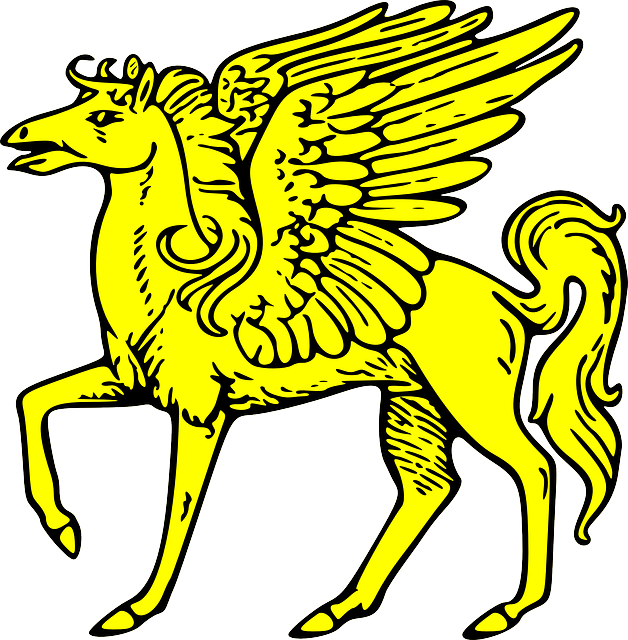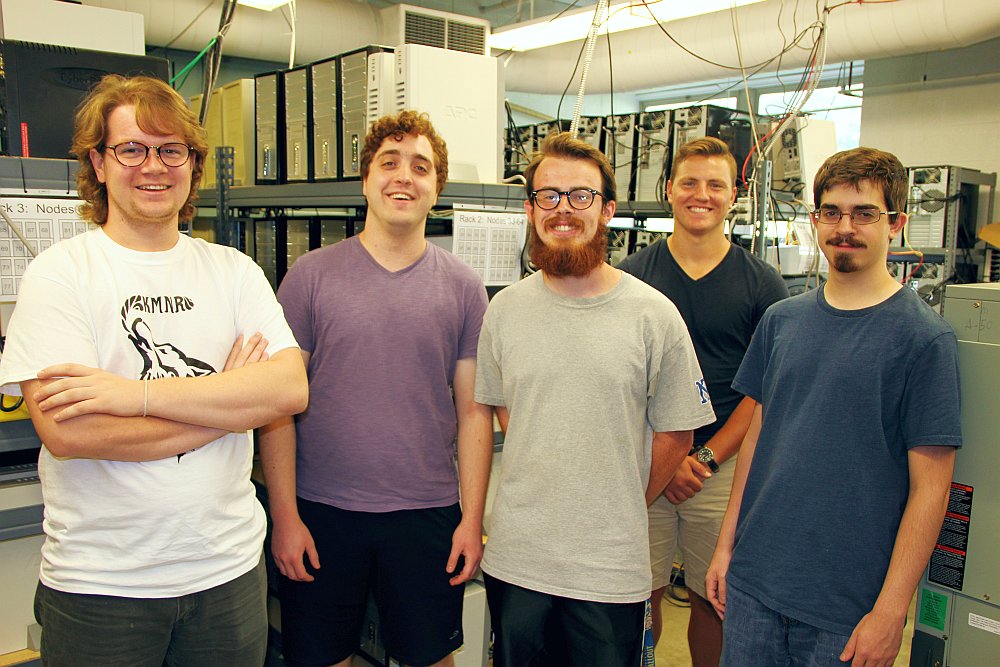
Pegasus IV Cluster

Welcome to Pegasus IV High-Performance Computing Cluster! 
| |
Pegasus IV is a self-made PC cluster designed, built and operated by Thomas Vojta's research group at the Department of Physics, Missouri University of Science & Technology. |  The Pegasus IV Team: Jack Crewse, Ian Ramsey, Steven Giangreco, Phillip Janowski, and Erac Kaiser (left to right). |
| Pegasus IV is the fourth generation of the Pegasus Cluster, the original one was developed in 2004/2005 by Rastko Sknepnek and Thomas Vojta. | ||
| |
Pegasus IV is used for computational research in condensed matter and statistical physics. | |
| |
Pegasus IV is supported in part by the National Science Foundation,
by Research Corporation, and by the UM Research Board.
 
|
The purpose of this website is twofold:
(i) For new members of Thomas Vojta's research group, it provides basic information on how to get started using the cluster.
(ii) It describes the cluster design and main steps of the installation. We hope that this information will be useful for someone who wants to build a similar cluster. If you wish to know how to build a diskless high-performance computing cluster based on Scientific Linux 7, Red Hat Enterprise Linux 7, or CentOS 7, go to the Diskless Clusters section of this website.
Pegasus I to IV Clusters have been supported in part by the National Science Foundation under Grant Nos. DMR-0339147, DMR-0906566, DMR-1205803, DMR-1506152, and DMR-1828489. Any opinions, findings, and conclusions or recommendations expressed in this material are those of the author(s) and do not necessarily reflect the views of the National Science Foundation.
|
Disclaimer: We are theoretical physicists without professional training in Linux administration and networking. Thus, some of the facts and explanations on this site may be misleading or even wrong. Our intention is to summarize our experiences and share some of the problems we've faced while designing and building Pegasus IV Cluster. No guarantee is given that by solely following what is written here you'll be able to build a working diskless Linux cluster. Nonetheless, we hope you'll find at least some of the material useful. Any comments and suggestions are more than welcome! |
Pegasus IV Cluster web site created by Rastko Sknepnek and Thomas Vojta, last modified Dec 3, 2018